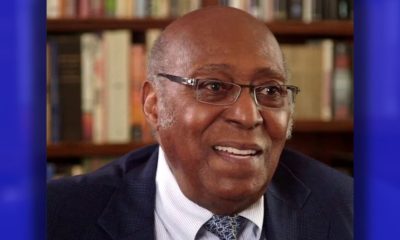Op-Ed
Child Watch: Closer to the Finish Line

By Marian Wright Edelman
NNPA Columnist
With opportunity gaps widening for poor children and children of color, new guidance from the Office for Civil Rights in the U.S. Department of Education offers new hope and protection from discrimination. For the first time in 13 years, the department now makes clear that states, school districts, and schools must make education resources equally available to all students without regard to race, color, or national origin.
It prohibits schools and school districts from discriminating in their allocation of courses, academic programs and extracurricular activities, teachers and leaders, other school personnel, school facilities, and technology and instructional materials, and offers steps to level the playing field. This is some of the unfinished business of the Civil Rights Movement and a giant step forward for poor children, often children of color, currently taught at higher rates by inexperienced, unqualified, or out of field teachers and provided far fewer resources than their wealthier peers. Our responsibility now is to ensure that children left behind truly benefit from these protections.
The new guidance has real potential to address many of the lingering disparities after Brown v Board of Education. Sixty years after that historic court decision, the Department of Education has made it clear that poor children and children of color are still routinely denied access to their fair share of strong teachers, decent schools, and current textbooks. These actions are not only immoral, but illegal under the Civil Rights Act of 1964.
The guidance states that wherever a state or district has seen fit to provide any education resource, such as a chemistry course, high-speed Internet access, or a school counselor, it must be provided equally. This has been in the works for a very long time and was inspired by the Equity and Excellence Commission, convened in 2010 to examine and propose remedies to disparities in educational opportunities and student achievement.
Years of advocacy that preceded Brown sought federal oversight of unfair distribution of resources by schools, districts, and states. But fairness must be a continuing concern as separate and unequal continues to pervade the education of children in our nation. The last time similar guidance was issued by the Department of Education was January 19, 2001 as one of the last acts of the Clinton administration.
Catherine Lhamon, Assistant Secretary for Civil Rights in the U.S. Department of Education, said in her “Dear Colleague letter” to states, school districts, and schools: “Students of color must not be consigned to dilapidated, overcrowded school buildings that lack essential educational facilities, such as science laboratories, auditoriums, and athletic fields, and that may not be able to support the increasing infrastructure demands of rapidly expanding educational technologies while providing better facilities for other students.”
While this language may sound like a familiar argument from the desegregation cases in the 1960s when “educational technology” meant film strips and slide rules, this new guidance recognizes that disparities still exist today and demonstrates a heightened commitment by the Administration to eliminate discrimination “root and branch” and protect students’ access to education.
If students of color in a school are consigned to remedial courses and are denied a strong teacher or current textbooks that could be discriminatory. If advanced placement courses are offered only in schools with the lowest enrollment of Black or Latino students, or if the only district school without air conditioning is the one most Latino students attend, or if the math teacher assigned to English language learners is the only math teacher without a major or minor in math, this may be evidence of discrimination in the distribution of educational resources. The Civil Rights Act protects students both from intentional discrimination and from discrimination that rises from the disparate impact of policies and procedures on student groups by race.
This new guidance is good and long overdue news for poor students and students of color in education. The next step is ensuring what is promised is delivered. Students, parents, educators and community members who suspect children are receiving less than their fair share should seek to learn more, address problems they see, and file complaints with the Department of Education’s Office for Civil Rights when disparities are not addressed. Monitoring of enforcement is essential if the neediest children are to benefit. Every child deserves a level playing field and a fair chance to succeed.
Marian Wright Edelman is president of the Children’s Defense Fund whose Leave No Child Behind® mission is to ensure every child a Healthy Start, a Head Start, a Fair Start, a Safe Start and a Moral Start in life and successful passage to adulthood with the help of caring families and communities. For more information go to http://www.childrensdefense.org.
###













































